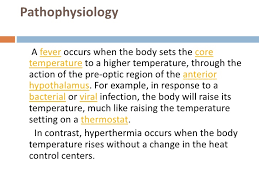The normal human body temperature oral (under the tongue) should be about 36.8°C (98.2°F), while the normal internal human body temperature (rectal, vaginal) should be at about 37.0°C (98.6°F).
Values of at least 0.5°C (32.9°F) above said temperature can be considered fever while temperatures of 1-2°C (33.8 - 35.6°F) below normal temperature are known as 'Hypothermia' (body temperature too low).
Your body temperature of 37.7°C (99.9°F) is high and might be fever.
A temperature slightly above normal to a temperature of 100.4°F (38°C) is called a low grade fever and usually not a cause for worry unless it continues to rise. A temperature that is higher than a low grade fever should be monitored and a fever of 104°F (40°C) or higher can be dangerous and a doctor should be called immediately. A high fever can cause convulsions and delusions, especially in infants, children and the elderly.
A fever is actually one of our body's healing defense mechanisms. When we get sick and get a fever, our body is actually trying to kill what made us sick in the first place. The most common causes of a fever are illnesses due to a virus or bacteria. Since viruses and bacteria cannot live at higher temperatures, the body's immune system uses fever to stop the illness. In other words, that fever that makes us feel so miserable is actually trying to heal us by killing what is making us sick. For this reason, it is usually best to let a low grade fever run its course, unless there are other severe medical symptoms. Drink a glass of water at 90 minutes interval.
Fever 37.7°C (99.9°F)? - Yes, you might have fever!
This same average temperature taken in the rectum is higher than in the mouth at approximately 0.5 degree Celsius or +/- 1 degree Fahrenheit.

Temperature Conversion - Fahrenheit to Celsius
The metric system uses the Celsius scale to measure temperature. However, temperatures are still measured on the Fahrenheit scale in the U.S.
Water freezes at 0o Celsius and boils at 100o Celsius which is a difference of 100o. Water freezes at 32o Fahrenheit and boils at 212o Fahrenheit which is a difference of 180o. Therefore each degree on the Fahrenheit scale is equal to 100/180 or 5/9 degrees on the Celsius scale.
How to convert Fahrenheit temperatures to Celsius
Subtract 32o to adjust for the offset in the Fahrenheit scale.
Multiply the result by 5/9.
Example: convert 98.6o Fahrenheit to Celsius.
98.6 - 32 = 66.6
66.6 * 5/9 = 333/9 = 37o C.
There is a mental math method to approximate the Fahrenheit to Celsius conversion. The ratio of 5/9 is approximately equal to 0.55555....
How to approximate the conversion of Fahrenheit temperatures to Celsius with mental math.
Subtract 32o to adjust for the offset in the Fahrenheit scale.
Divide the Celsius temperature by 2 (multiply by 0.5).
Take 1/10 of this number (0.5 * 1/10 = 0.05) and add it from the number above.
Example: convert 98.6o F to Celsius.
98.6 - 32 = 66.6
66.6 * 1/2 = 33.3
33.3 * 1/10 = 3.3
33.3 + 3.3 = 36.6 which is an approximation of the Celsius temperature
Note: This lesson includes temperatures that use negative numbers. Negative numbers follow a pattern that is opposite of positive numbers. The number -20 is smaller than the number -10. Example of counting with negative and positive numbers: -5, -4, -3, -2, -1, 0, 1, 2, 3, 4, 5
Example of converting negative Fahrenheit temperatures to Celsius
Convert -4o F to Celsius.
-4 - 32 = -36
-36 * 5/9 = -180/9 = -20o C

A fever occurs when the body sets the core temperature to a higher temperature , through the action of the pre-optic region of the anterior hypothalamus. For example, in response to a bacterial or viral infection, the body will purposely raise its temperature so the white blood cells can function at optimal in killing the invaders. The body declares WAR! So the high temperature. After the victory, white blood cells production reduced, so is the core temperature. Back to normalcy, 37° C.
A fever occurs when the body sets the core temperature to a higher temperature , through the action of the pre-optic region of the anterior hypothalamus. For example, in response to a bacterial or viral infection, the body will purposely raise its temperature so the white blood cells can function at optimal in killing the invaders. The body declares WAR! So the high temperature. After the victory, white blood cells production reduced, so is the core temperature. Back to normalcy, 37° C.

No comments:
Post a Comment